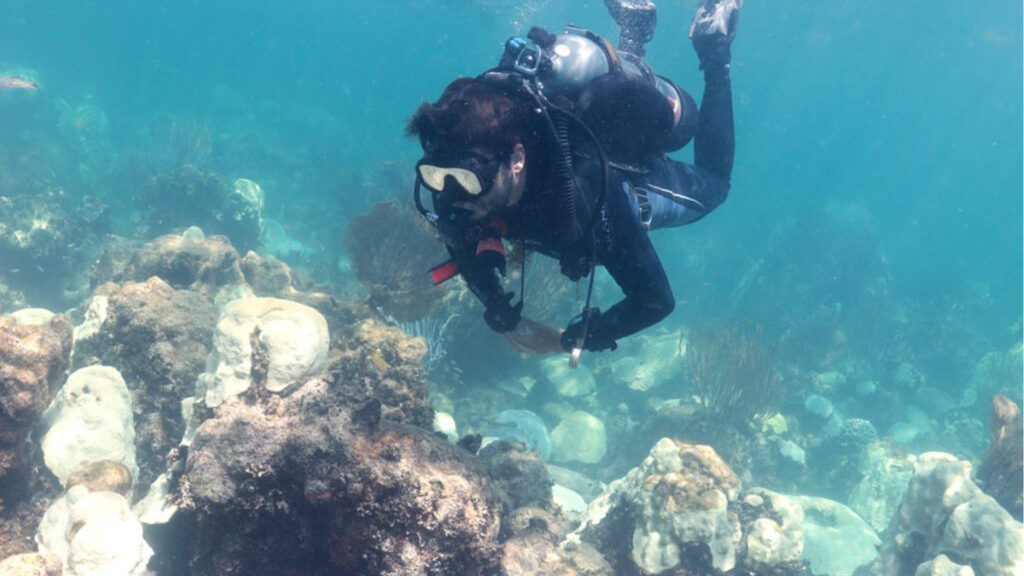By Holly Merrill Raschein, Monroe County mayor
As mayor of Monroe County, my resolution for the new year is to make this the start of a new chapter for our reefs, and I’m asking you to join me in that commitment.
We must embrace the forthcoming changes of the National Marine Sanctuary’s Restoration Blueprint, understand what those changes mean for our daily interactions and uses of local waters, follow the new rules and help educate others about why these changes are so significant. The Florida Keys’ ocean and coral reefs do so much for us. Now it’s critical we return the favor. This better, stronger plan for the sanctuary is coming soon, and it is our responsibility as stewards of this ecosystem to embrace the changes in how we interact with coral reefs and nearshore ecosystems.
We must all unite to make the Restoration Blueprint a success for the Florida Keys.

Monroe County residents and visitors are readily embracing this winter season after a scorching summer, which culminated in a historic ocean heat wave. Widespread coral bleaching, and in some cases, coral mortality, was documented in shallow reefs and coral nurseries in the Keys. While some fish fled to cooler depths, many foundational habitat-forming species like corals, sea sponges and seagrasses could not.
While we could not immediately counteract the impact of this summer’s extraordinary warming, a Herculean effort by local nonprofits saved many corals by moving them to cooler, deeper areas or laboratory nurseries so we could rebuild depleted populations later. Innovative, science-based coral restoration has made incredible progress toward ecosystem recovery, but additional pieces to a larger management puzzle require long-term solutions.
From Monroe County constructing a billion-dollar sewer system to investing millions of dollars in canal restoration, our community has made great strides and significant investments in improving water quality in the past two decades.
Still, we can continue to push forward in these efforts. We must pursue bold action on climate change to protect our oceans in the next few decades. And we must manage the oceans, especially federal marine sanctuaries and state aquatic preserves, to better withstand the factors contributing to their degradation. For the Florida Keys, this new Restoration Blueprint management plan is our guiding light for coral reefs. Decades of marine science in Florida all point to making marine life more likely to withstand the harmful effects of stressors like higher temperatures by reducing other pressures on sensitive ecosystems.
When we get sick during this time of year, we rest, reduce stress and behave healthfully. The same works for marine life. Oceans benefit significantly from reducing fishing pressure, reducing the overuse of coral areas by even well-meaning snorkelers and scuba divers, slowing boats to reduce propeller scarring of seagrass beds, giving adequate space to wading birds that nest on mangrove islands and restoring the normal balance of predators and prey in the water.

Marine conservation science shows us that maritime zones with strong protections can reduce the pressure on ecosystems, which works hand-in-hand with restoration efforts focusing on resistance to and recovery from the ill effects of climate change and increasingly severe marine heat waves. Reducing pressure on ocean ecosystems means we can’t manage our marine sanctuaries like “business as usual.” We must change something to make marine life more sustainable. All of us — anglers, divers, snorkelers, boaters, businesses and more — must work together to keep the ocean as healthy as possible.
Fortunately for Florida’s marine life, the proposed Restoration Blueprint allows us to change our behavior thoughtfully to create more sustainable oceans. The current zoning and management plan for the Sanctuary dates to the 1990s, when conditions in the Florida Keys were very different and much better than they are now.
We have a rare opportunity to embrace a plan for the Florida Keys that can nimbly and aggressively respond to current and future threats. It will be a bold plan that responds to the issues of warming waters and coral bleaching, extreme heat waves, declining abundance of commercial and recreationally important fish, coral disease, overuse of some sensitive regions and dying seagrasses.
If we want Florida’s oceans, especially our beloved coral reefs, to be sustained and thrive for future generations, we must strengthen protections and rules for their management now. Let’s take action this new year for what we love most.
Holly Merrill Raschein is the mayor of Monroe County. This opinion piece was originally published by the Miami Herald, which is a media partner of The Invading Sea.
If you are interested in submitting an opinion piece to The Invading Sea, email Editor Nathan Crabbe at ncrabbe@fau.edu. Sign up for The Invading Sea newsletter by visiting here.



